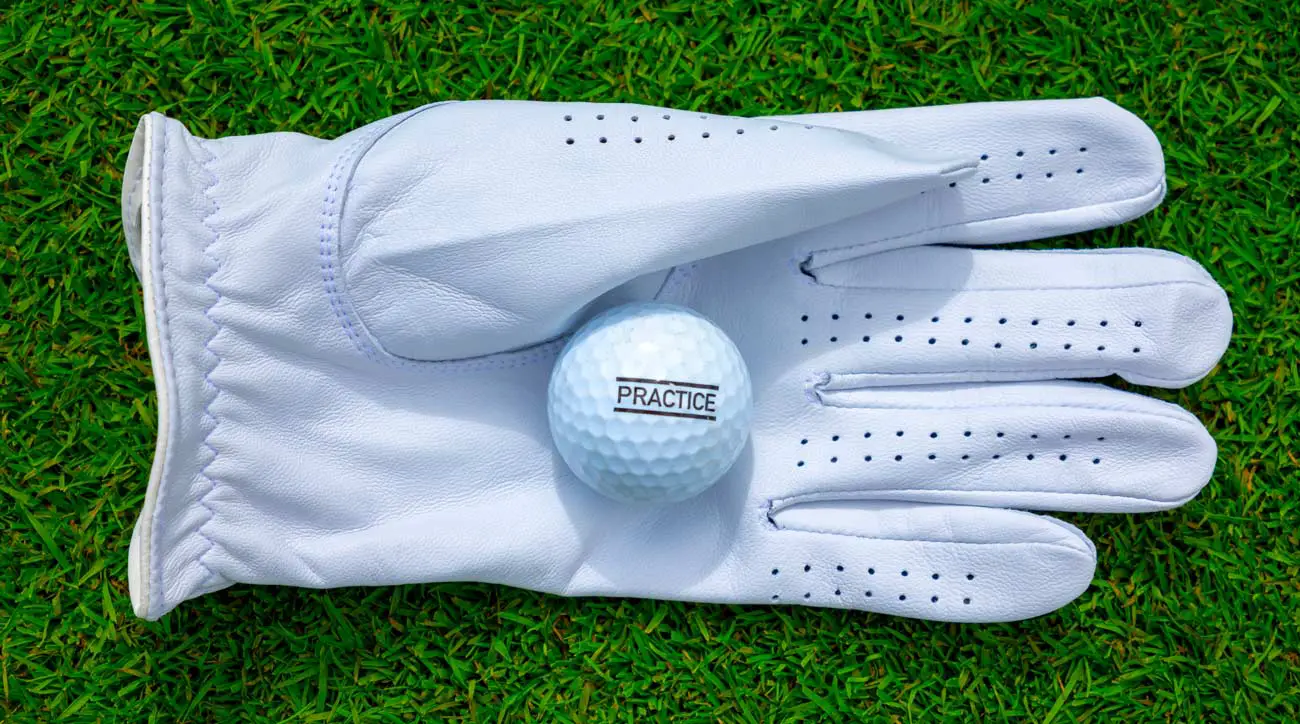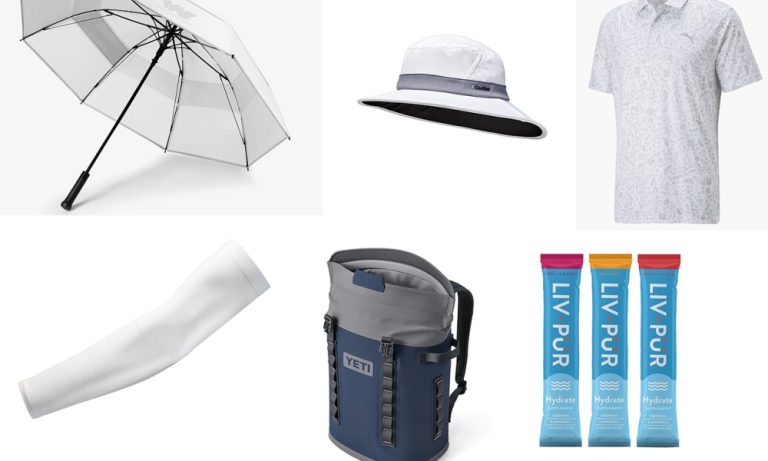What Are Golf Gloves Made Of

When it comes to the game of golf, every detail matters, and the right equipment can make a significant difference in your performance on the course. One often overlooked but essential piece of equipment is the golf glove. Golf gloves provide golfers with a firm grip on the club, enhancing control, accuracy, and overall swing consistency. But have you ever wondered what materials go into the construction of golf gloves?
In this article, we delve into the fascinating world of golf gloves and explore the various materials used to make them. Understanding what golf gloves are made of can help you make informed decisions when selecting the right glove for your game.
A wide range of materials is used in the production of golf gloves, each offering its unique set of characteristics, advantages, and considerations. From classic leather to innovative synthetic blends, the choice of material can affect factors such as grip, durability, comfort, and even breathability.
Join us as we uncover the secrets behind the materials that make up golf gloves, explore their performance attributes, and help you make the best choice to elevate your golfing experience. Let’s dive into the world of golf glove materials and discover what sets them apart on the fairways and greens.

What Are Golf Gloves?
Golf gloves are an essential piece of equipment worn by golfers to improve their grip on the club and optimize their performance on the course. These gloves cover the hand and fingers, providing a secure connection between the golfer and the club.
The Purpose and Significance of Golf Gloves
The primary purpose of golf gloves is to enhance the golfer’s grip on the club, allowing for greater control and consistency in swings. They provide a barrier between the hand and the club’s grip, reducing the chance of slippage and helping maintain a stable hold throughout the swing.
Golf gloves offer several benefits, including:
- Improved Grip: The materials used in golf gloves offer enhanced friction, allowing golfers to maintain a more secure grip on the club, even in adverse weather conditions or when hands become sweaty.
- Comfort and Protection: Golf gloves provide cushioning and protection against blisters and calluses that can develop from repeated swings and prolonged practice sessions. They also offer added comfort, especially when playing for extended periods.
- Consistency: By providing a consistent grip, golf gloves help golfers develop a repeatable swing, promoting consistency in their performance.
Now, let’s delve into the materials used to construct golf gloves and how they contribute to these benefits.
Leather Golf Gloves: A Classic Choice
Leather has long been the traditional material of choice for golf gloves, offering a combination of durability, flexibility, and a classic aesthetic.
Exploring the Attributes of Leather Golf Gloves
Leather golf gloves are known for their natural feel and superior grip. They conform to the shape of the golfer’s hand over time, providing a customized fit. The soft and supple nature of leather enhances comfort while allowing for maximum control and sensitivity in handling the club.
Different Types of Leather Used in Golf Gloves
Various types of leather are used in the production of golf gloves, each with its unique characteristics:
- Cabretta Leather: Cabretta leather, sourced from sheepskin, is highly regarded for its thin and soft texture. It offers excellent grip and responsiveness, making it a popular choice for professional golfers.
- Synthetic Leather: Synthetic leather, often made from polyurethane or microfiber, is a more affordable alternative to genuine leather. It offers durability, flexibility, and moisture resistance, making it suitable for golfers seeking a balance between performance and cost.
The Advantages and Considerations of Choosing Leather Golf Gloves
Leather golf gloves provide several advantages, including:
- Superior Grip: The natural tackiness of leather, combined with its ability to mold to the hand, provides a secure and reliable grip on the club.
- Breathability: Leather gloves allow for better airflow, preventing excessive sweating and maintaining comfort during long rounds.
- Durability: High-quality leather gloves are known for their longevity and resistance to wear and tear.
However, there are some considerations when choosing leather golf gloves:
- Price: Genuine leather gloves tend to be more expensive than synthetic alternatives.
- Maintenance: Leather gloves require proper care and maintenance to retain their quality and performance over time.
Synthetic Golf Gloves: Modern Innovation
While leather gloves have long been the go-to choice for golfers, synthetic golf gloves have gained popularity in recent years. These gloves offer their unique set of advantages and performance characteristics.
Understanding the Characteristics of Synthetic Golf Gloves
Synthetic golf gloves are typically made from a combination of synthetic materials such as polyurethane, microfiber, or synthetic leather. These materials are engineered to mimic the qualities of leather while providing additional benefits.
Synthetic golf gloves offer the following characteristics:
- Durability: Synthetic materials are often more resistant to wear and tear, making them a durable option for golfers who play frequently or in harsh weather conditions.
- Moisture Resistance: Many synthetic gloves incorporate moisture-wicking properties that help keep the hands dry and comfortable during play. This can be particularly beneficial on hot and humid days.
- Ease of Care: Synthetic gloves are generally easier to clean and maintain compared to leather gloves. They can often be machine-washed or wiped down with a damp cloth, simplifying the care routine.
- Affordability: Synthetic golf gloves tend to be more budget-friendly than their leather counterparts, offering a cost-effective option for golfers looking for performance and value.
The Benefits and Drawbacks of Synthetic Golf Gloves
Synthetic golf gloves provide several advantages that make them appealing to golfers:
- Consistency: Synthetic materials offer a consistent grip, ensuring stability and control during the swing.
- Versatility: Synthetic gloves are often designed to be suitable for various weather conditions, providing grip and comfort in both wet and dry environments.
- Affordability: The lower cost of synthetic gloves makes them an attractive option for golfers on a budget or those who prefer to have multiple gloves for different playing conditions.
However, there are some considerations to keep in mind when choosing synthetic golf gloves:
- Feel and Sensitivity: Some golfers may find that synthetic gloves lack the same natural feel and sensitivity as leather gloves. However, advancements in materials and design have significantly improved the overall performance of synthetic options.
- Breathability: While synthetic gloves offer moisture-wicking properties, they may not provide the same level of breathability as leather gloves. This can lead to potential discomfort in hot and humid conditions.
Hybrid Golf Gloves: The Best of Both Worlds
For golfers who desire the benefits of both leather and synthetic materials, hybrid golf gloves offer an intriguing solution. These gloves combine the qualities of both materials, providing a unique balance of performance, comfort, and durability.
Exploring Hybrid Golf Gloves that Combine Leather and Synthetic Materials
Hybrid golf gloves typically feature a leather palm for enhanced grip and feel, combined with synthetic materials on the back of the hand for improved flexibility and breathability. This hybrid construction offers the best of both worlds, catering to golfers who seek the advantages of different materials in a single glove.
The Advantages of Hybrid Gloves in Terms of Comfort and Performance
- Improved Fit: Hybrid gloves often provide a snug and comfortable fit due to the combination of materials. The leather palm molds to the hand, while the synthetic back allows for flexibility and breathability.
- Enhanced Grip: The leather palm in hybrid gloves offers excellent grip and control, ensuring a secure connection with the club.
- Breathability: The synthetic back of hybrid gloves promotes airflow, helping to keep the hands cool and dry during play.
Factors to Consider when Choosing Hybrid Golf Gloves
When selecting hybrid golf gloves, consider the following factors:
- Materials Ratio: Different hybrid gloves may have varying ratios of leather to synthetic materials. Finding the right balance that suits your preferences and playing style is key.
- Quality and Construction: Assess the quality of the materials used and the overall construction of the glove to ensure durability and performance.
- Fit and Sizing: Proper fit is crucial for optimal performance and comfort. Take into account the sizing and adjustability features of the gloves to find the right fit for your hand.
- Playing Conditions: Consider the playing conditions you most frequently encounter. Hybrid gloves with moisture-wicking properties and breathability are ideal for hot and humid climates, while those with added insulation may be suitable for cooler weather.
Hybrid golf gloves offer versatility and customizable performance, allowing golfers to enjoy the benefits of different materials in a single glove.
Factors Affecting Golf Glove Performance
Several factors can influence the performance and effectiveness of golf gloves. Understanding these factors will help you make informed decisions when selecting the right glove for your game.
Fit and Sizing Considerations
A proper fit is essential for optimal performance and comfort. Ill-fitting gloves can affect your grip, dexterity, and overall feel of the club. When choosing golf gloves, consider the following fit and sizing factors:
- Hand Size: Different manufacturers may have slight variations in sizing. Refer to their sizing charts and guidelines to determine the appropriate size for your hand.
- Snugness: The glove should fit snugly without being overly tight or restrictive. A glove that is too loose may lead to slippage and compromise your grip.
- Finger Length: Ensure the fingers of the glove align with your own fingers to ensure maximum control and feel.
- Closure Mechanism: Consider the closure mechanism, such as Velcro straps or snap buttons, to allow for proper adjustment and secure fit.
Breathability and Moisture-Wicking Properties
Golf can be a physically demanding sport, causing hands to sweat during play. Look for gloves that offer breathability and moisture-wicking properties to keep your hands dry and comfortable. Proper ventilation and moisture management will prevent excess perspiration, reducing the chance of slippage and discomfort.
Durability and Longevity
The durability of golf gloves is essential, particularly if you play golf frequently or in challenging conditions. Consider the materials used, stitching quality, and reinforcement in high-wear areas to ensure the glove withstands regular use without wearing out quickly.
Choosing the Right Golf Glove Material for Your Game
Choosing the right golf glove material depends on several factors, including personal preference, playing conditions, and performance requirements. Here are some considerations to help you make an informed decision:
- Leather: Leather golf gloves offer a classic feel, superior grip, and durability. They are ideal for golfers who prioritize sensitivity and control.
- Synthetic: Synthetic golf gloves provide excellent value for money, durability, and moisture resistance. They are suitable for golfers seeking a balance between performance and affordability.
- Hybrid: Hybrid golf gloves combine the advantages of leather and synthetic materials, offering a customizable fit, breathability, and grip. They are a great option for golfers who want the best of both worlds.
Consider your playing style, climate, and budget when selecting the appropriate glove material. Trying out different options and seeking professional advice can help you find the perfect match for your game.
Care and Maintenance of Golf Gloves
Proper care and maintenance of your golf gloves will ensure their longevity and continued performance. Follow these tips to keep your gloves in top condition:
- Cleaning: Regularly clean your golf gloves to remove dirt, sweat, and oils that can accumulate over time. Follow the manufacturer’s instructions for cleaning, as different materials may require specific care. In general, most gloves can be hand-washed with mild soap and water. Gently squeeze out excess water and allow them to air dry.
- Avoid Excessive Moisture: While some moisture is inevitable during play, excessive moisture can deteriorate the materials and compromise the performance of your gloves. Avoid storing wet gloves in closed spaces or leaving them exposed to direct sunlight, as this can lead to mildew or shrinkage.
- Rotate Gloves: If you play golf frequently, consider rotating between multiple pairs of gloves. This allows each glove to fully dry out and rest between uses, extending their lifespan and maintaining their shape.
- Storage: Proper storage is essential to maintain the shape and condition of your golf gloves. Avoid crumpling or folding them, as this can create creases and affect the fit. Store gloves flat or use a glove keeper to preserve their shape. Additionally, keep them away from extreme temperatures and direct sunlight, which can cause the materials to deteriorate.
Specialty Golf Gloves for Specific Needs
In addition to the standard leather, synthetic, and hybrid gloves, there are specialized golf gloves designed for specific playing conditions or needs. Consider the following specialty gloves:
- Winter Golf Gloves: Winter gloves are specifically designed to provide warmth and protection in cold weather conditions. They often feature insulation and water-resistant materials to keep your hands comfortable and functional during winter rounds.
- Rain-Resistant Gloves: Rain gloves are made from water-resistant materials that maintain their grip even in wet conditions. These gloves often have textured palms or added grip-enhancing features to ensure a secure hold on the club when playing in the rain.
Exploring these specialty gloves can enhance your comfort and performance in specific situations, allowing you to adapt to different weather conditions and play your best game.
Conclusion
Understanding the materials used in golf gloves and their characteristics is essential for selecting the right glove that suits your playing style, preferences, and budget. Leather, synthetic, and hybrid gloves each offer unique advantages and considerations, catering to different golfers’ needs.
Remember to prioritize fit, breathability, durability, and moisture-wicking properties when choosing golf gloves. Proper care and maintenance will extend the lifespan of your gloves and ensure optimal performance on the course. Explore specialty gloves for specific conditions to enhance your comfort and grip in various playing environments.
By investing in the right golf gloves and taking care of them, you can enjoy improved grip, comfort, and control, ultimately enhancing your overall golfing experience.






